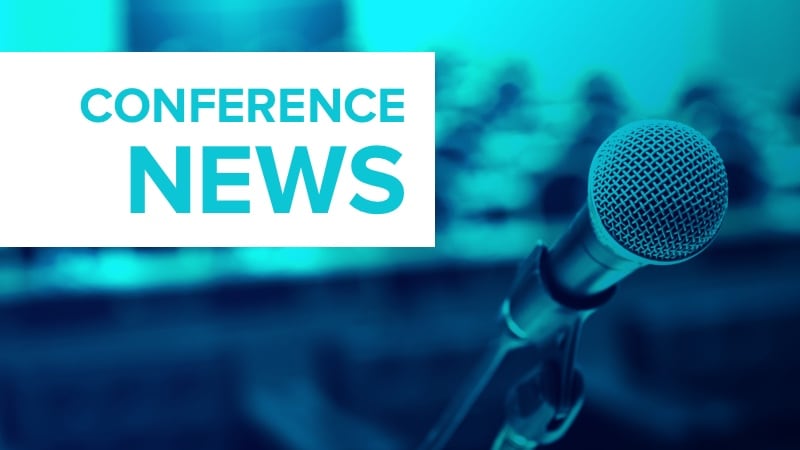“Have you ever had a nightmare when you’re running to class and when you get there you have no pants on? That’s how I feel today. Naked. No Powerpoint slides to hide behind.”
This was Neal J. Meropol, MD, standing alone on the stage addressing the audience at ASCO Voices, a regular storytelling event held during the annual meeting of the American Society of Clinical Oncology.
Just him. No props, bells, or whistles. He said it reminded him of the first academic presentation he ever made, which was more than 30 years ago, in 1988.
“Back then there were no Powerpoints,” he recalled. “We had Kodachromes that we would project on a screen, and that was it.”
Flash forward to the present. “Those of you presenting at this meeting probably put the finishing touches on your slides when you were 30,000 feet in the air and used your laptop,” he commented. “And when you landed you beamed them to your cell phone. And maybe you also ordered some shoes online and made a dinner reservation, read the news, or sent a selfie to your family.”
But while all this technology is widely available, the oncology community is lagging far behind when it comes to using it for clinical trial recruitment.
Harnessing it could address a key problem ― the lack of patients in cancer clinical trials, he argued. Meropol, a medical oncologist, clinical investigator, and outcomes researcher, is currently vice-president of research oncology at Flatiron Health in New York.
“We are still conducting studies the same way that we did when I started 30 years ago,” he said. “I bet some of you are still carrying around lists of available studies at your center and trying to match patients.
“ASCO’s vision is a world where all cancers are prevented or cured and all survivors are healthy,” he commented. “One of the impediments to achieving this vision is the lack of patients who participate in clinical trials, even though they are a key source of evidence in oncology.”
“Woefully few” patients take advantage of them, he noted. Estimates range from fewer than 5% to about 10%.
Difficult Logistics
One problem with clinical trials is that individuals who participate are not representative of the average patient with cancer, Meropol argued. The patients who participate in clinical trials tend to be younger, better educated, wealthier, White, and have few comorbidities. Because these participants are not representative, the results of clinical trials may not be generalizable, he said.
Another issue concerns logistics. First, there is the difficulty of identifying patients who may be eligible, given the complexity of inclusion and exclusion criteria. Second, there can be challenges in recruiting and retaining high-quality research staff. And finally, executing the studies and collecting data have grown increasingly difficult, even for academic centers.
“I’ve come to believe that one of the greatest barriers to success are the logistics,” Meropol commented.
These logistics make it particularly difficult for studies to take place at community sites, which is where most patients receive their care. Most trials continue to be conducted at academic centers, and as a result, many patients have limited access because the sites are not in a convenient location. The extra time and financial burden for taking part in a clinical trial are sometimes untenable, he noted, as patients may have to travel far, incurring transportation costs, time away from work, childcare costs, and so on.
“Time to Embrace the Now”
“The bottom line is that we need to make it easier for all patients and oncologists to take part in research, and the time has come to use technology to make this happen,” Meropol emphasized.
Patients are coming into the clinic and are being asked for the same information over and over again — by the research team, the clinical team, and everyone else, and then it is being transcribed into shadow charts for research.
Meropol lamented that this is “so 80s” in this era of the smartphone. “It is time for us to embrace the now ― not the future but the now.”
The “now” right now is the potential of the electronic health record (EHR) for research, he argued. This information is already being used to match patients for clinical trials at the point of care, and natural language processing and machine learning have been implemented to further automate the process.
About 70% of the information that researches need has already been collected and is available in the EHR. Since it is being routinely collected, “then why not use it?”
Software tools are being developed to transfer these data for clinical studies, he noted. Embracing technology that leverages the EHR, improves data collection, and enables clinical trials to take place wherever care is given will increase the recruitment of patients into clinical trials, he predicted.
The COVID pandemic has shown that telemedicine and remote data monitoring can replace on-site activity. This can reduce the burden on patients, reduce expenses for sponsors, and increase speed of evidence generation, he pointed out.
“We can build a world where clinical research is part of routine care, a world where more and diverse patients take part in clinical trials,” Meropol said.
“It’s time to catch up with other fields,” he said. “Our patients are counting on us.”
American Society of Clinical Oncology (ASCO) 2022.
For more from Medscape Oncology, join us on Twitter and Facebook.
